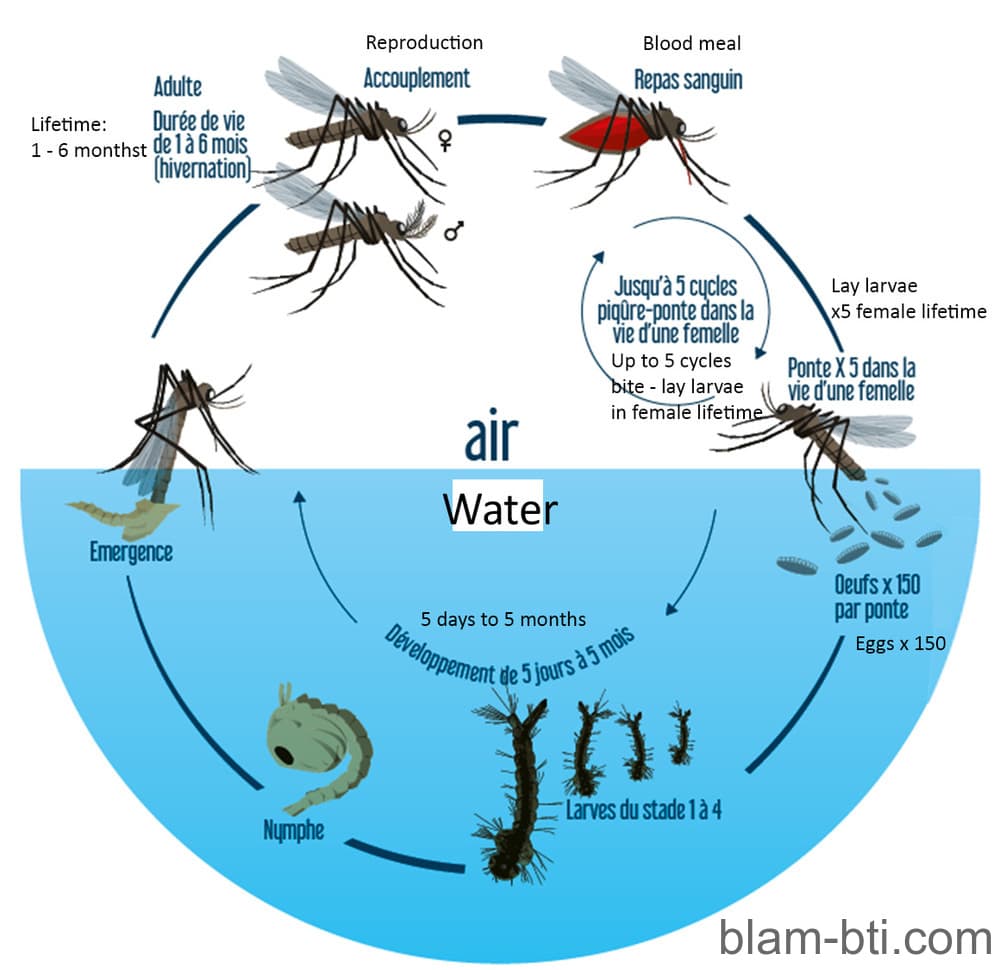BTI, (Bacillus Thuringiensis Israelensis) the active substance of BLAM is a natural product that provokes a deadly indigestion in mosquito larvae.
BTI only targets mosquito larvae: other aquatic species are preserved. Bacillus Thuringiensis Israelensis has no adverse effects on mammals, birds,fish or aquatic life.
Bacillus thuringiensis israelensis must be ingested by the target larvae (mosquito, fungus gnat, black fly). Once the bacterium has been ingested, it produces crystalline toxins which disrupt the larvae’s digestive system, thus stopping continued development and killing the pest larvae before they reach adulthood.
BLAM has a radical effect against mosquito larvae, fungus gnat larvae and black fly larvae.
Understanding the mosquito cycle

After laying the mosquito eggs, larvae will in a few days grow from 2mm to 12mm. Mosquito larvae are very easy to recognize: they are very thin and move my wiggling. They are often seen at the water surface for breathing and some species then dive to hide. It’s at the larvae stage that BLAM is efficient.
After the larvae stage the larvae transform into nymphs. They are easy to recognize with their large head, almost like a tadpole. It’s the mosquito’s final aquatic stage. At this point the nymph no longer eats, so BLAM has no effect on mosquito nymphs (pupea). It’s too late: you must apply BLAM as soon as the first larvae appear.
BTI very efficient against mosquito larvae
The World Health Organization switched to using BTI to kill mosquitoes as part of its anti-malaria campaign rather than use chemical pesticides.